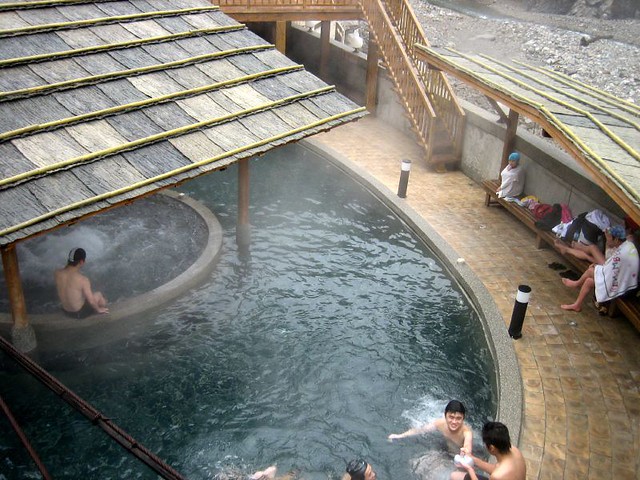7 Fun Facts About Taiwan Hot Springs
Taiwan hot springs are frequented year round by Taiwanese and foreigners alike. Taiwanese believe that the fountains of youth boast a variety of different health and beauty benefits.
Whether you’re exploring the bubbling waters in Beitou or the muddy springs in Guanziling, you’ll quickly find that no two springs were created equally. Some springs have a high sulfur content and emit a smelly rotten egg scent while others are colorless and odorless and safe to drink.
Here’s a quick little mini-lesson on the gorgeous natural hot springs in Taiwan. Readers beware: if you’ve never visited Taiwan before, this list will make you want to jump on the next plane out. You’ve been warned.
1. Beitou has one of the largest concentrations of spas and hot springs in the world
The large amount of sulfurous hot springs centered in the mountains of Beitou have brought in visitors from all across the world for years – and with good reason.
The healing waters are easily accessible by the MRT or bus, cheap to enter and vary in temperature. For those who prefer a more unique and tranquil experience, there are a myriad of hotels, resorts, and spas that offer spa treatments, a smaller population of visitors in the pools, and private spa rooms that can be rented by the hour for a completely personal soak.
One difference to note between the public hot springs and those at a resort is the dress code. Clothes are often not allowed when in a private resort while they are mandatory in most public areas. Since my time in Korea, I prefer the nude spas.
If you haven’t already tried it, put it on your bucket list – it’s so liberating and relaxing!
2. The very first hot spring hotel in Taiwan was opened in 1896
During Japanese rule, a man from Osaka, Japan named Hirado Gengo opened Taiwan’s very first hot spring hotel in Beitou in 1896. The Japanese onsen culture quickly caught fire in Taiwan, spurring a wave of appreciation for the hot waters.
3. There are 6 different types of springs
These springs can be found at various locations throughout the small island: sodium carbonate springs, sulfur springs, ferrous springs, sodium hydrogen carbonate springs, mud springs and salt or hydrogen sulfide springs. They’re all amazing.
4. Sulfur springs are said to be great for skin problems like acne and eczema
Of all the ailments that Taiwanese people believe the hot springs can cure, skin problems are the most prevalent. The rich minerals in the sulfur pools are believed to help soothe skin and restore it to a beautiful glow, all the more reason to head out for a nice, long dip.
5. Some of the hot spring water is safe to drink
Some of the hot springs are believed to be not only safe to drink, but also good for your health. Ingesting the warm and mineral enriched water is said to cure constipation, so if you happen to be a little backed up during your travels, you know where to go. (Don’t pretend like it doesn’t happen to you.)
6. Visitors are invited to boil an egg in the hot springs for a natural snack
Some of Taiwan’s hot spring hotels invite visitors to ditch their lunch and opt for a nice boiled egg cooked in the very waters in which they’re bathing. Just make sure you keep an eye on your egg; you don’t want to accidentally grab someone else’s egg, you naughty foreigner.
7. Taiwan has one of the few mud springs in the whole world
The hot springs in Guanziling are special because they are one of the few mud springs in the world. The murky waters are said to have extra healing powers that work wonders on arthritis and particularly problematic skin.
Calling all travelers! Have you ever visited the hot springs in Taiwan? What was your experience like? Share your answer with other travelers in a comment below.




